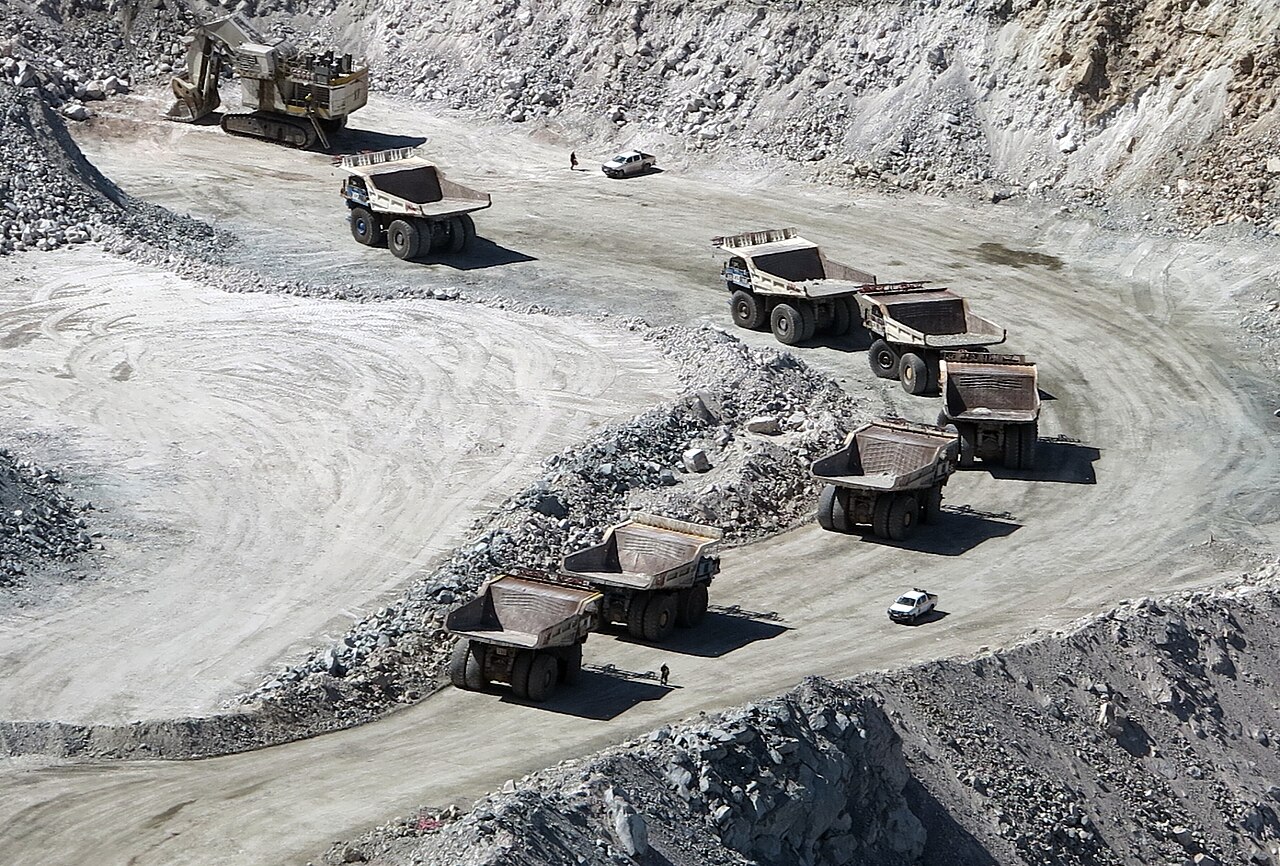Published by The Lawfare Institute
in Cooperation With

Doha Fails to Deliver
In an unsurprising denouement, OPEC and non-OPEC oil producing nations in Doha failed to reach an agreement to freeze oil production, sending oil prices tumbling once again. Talk of a potential deal has been ongoing for months, and has been largely pushed by those countries feeling the financial squeeze of low oil prices and looking for relief.
However, countries seeking relief left Sunday’s meeting empty handed, portending more pain for those struggling in the current low price environment and more competition from those producers hoping to remain standing. The Wall Street Journal reports that continued low oil prices could press countries like Angola and Venezuela “to the brink”, and the former seeking support from the International Monetary Fund to stay afloat. While the IEA forecast the oil market will return to balance at the end of 2016 in its monthly Oil Market Report, Russian officials warned Sunday’s decision could postpone a recovery until next year.
However, the combination of a strike in Kuwait, pipeline sabotage in Nigeria, and payment disputes in Iraqi Kurdistan have taken 2 million barrels offline, putting supply and demand close to balance for the moment. However, the strike in Kuwait was resolved today, pushing prices back down—and underscoring oil market sensitivity to political and regional developments in producing countries.
Meanwhile, the Saudis keep pumping at record levels, Iran is still struggling to get its product to market, and Russia is attempting to counter Saudi moves in markets from China to India. The latter, according to The Wall Street Journal, represents a new front in the battle for market share, and the biggest growth market for oil in the years to come.
Russian state-owned oil company Rosneft will begin its first regular regular crude deliveries to India, the world’s third-largest energy consumer after the U.S. and China, this year. While Saudi Arabia is currently India’s largest supplier, Russia appears to be jumping into the ring along with Iraq and Kuwait. In its 2015 World Energy Outlook, the IEA called India the new “center of the world energy stage,” predicting the country will contribute “the single largest share of growth, around one-quarter, in global energy demand” in the decades to come.
India’s Water Problem
Energy demand isn’t the only thing on the rise in India. Water demand, along with tension, is also shooting upward, leading Quartz to speculate on India’s looming water wars. Ten out of India’s 29 states have declared a drought in 2016, unwelcome news anywhere but particularly problematic in a country with the highest number of people without access to clean water, a tenth of the worldwide total. Many (mostly poor) Indians are forced to pay exorbitant prices for water, or worse, use contaminated supplies, while existing resources are mismanaged, mined to depletion, and rapidly disappearing.
Reporting on the drought afflicting Marathwada in western India, Nikhil Inamdar points to the confluence of weather, government mismanagement, and economic opportunism as the cause of suffering and frustration, and a potential catalyst for violence. In a nod to this possibility, government authorities have forbid more than five people from congregating around water supplies to prevent fights in western India. Meanwhile, droughts in northern India have sparked anger as well, as many are forced to go days without bathing, and the lack of water for irrigation has dimmed economic—and in some instances marriage—prospects.
The crisis comes on the heels of below average monsoon seasons and is exacerbated by mismanagement, inefficiency, and high depletion rates, not to mention a rapidly growing population. As the summer looms and temperatures rise, many worry that so too could tensions and competition over scarce surface water resources. A water stakeholder in India warned The Financial Times that this could be India’s “worst summer” as an independent state. Absent reforms to improve efficiency, manage demand, and provide for an equitable distribution of clean water resources, water wars may not be far off the mark.
Spring Forward in Venezuela
India isn’t the only one hoping for May showers. In Venezuela, the Maduro government continues to scramble to deal with a drought-induced electricity crisis, as explained in the Spring (House) Cleaning edition of Hot Commodities.
As conditions worsen, President Maduro is pulling out all the stops, including changing to the country’s time zone in an effort to reduce electricity consumption. The Maduro government announced it is reversing a change made by Chavez to move time back thirty minutes to enable school children to wake up with the sun (plus, time zones are an imperialist creation), effective May 1. Now, Madura hopes moving time forward will allow people to come home while the sun is still out, and avoid turning the lights on during peak electricity demand.
This comes as water levels in Venezuela’s hydroelectric dams continue to drop thanks to a severe drought (see the last HC post for more). Fridays are now holidays for state employees—
as was this Monday—and even hair dryers are under fire for their contribution to electricity demand. The water level in the dam must remain at above 240 meters in order for it to operate safely and provide electricity.
The current level? 243 meters.
Turn on the Gas
While water may be in short supply, Deloitte reports that the world’s supply of liquified natural gas (LNG) is growing, upending market dynamics and leading some to warn of a coming LNG supply glut. Uncertain LNG demand in major current and potentially large LNG importers, namely Japan and China, alongside increasing supply and falling prices have changed the dynamics for liquified natural gas producers. While this is welcome news for LNG consumers, particularly those in Asia where the drop in oil prices and the increase of supply has driven down prices, Bloomberg reports many LNG producers are in in limbo when it comes to developing new projects.
However, while many producers may be hitting pause, Iran can finally press play following the complete removal of sanctions on its LNG industry.
While entering the market amid low prices and uncertain demand could be a challenge, low prices are also an opportunity to recruit new customers and lock them into long-term contracts. For Iran, this could be mean the beginning of renewed economic ties with Europe. The Wall Street Journal reports that EU Energy Commissioner Miguel Arias Canete visited Tehran over the weekend to discuss the post-sanctions relationship with his Iranian counterparts. In particular, Canete pointed to the potential for Europe to receive LNG from Iran. Enel Trade, an Italian company, reportedly signed an MOU to purchase LNG from Iran last week
The EU isn’t the only interested customer. According to the Tehran Times, Iran and South Korea plan to sign multiple MOUs on energy cooperation during the South Korean President’s visit to Iran next month. The agreements will signify a growing industrial partnership, and include the expansion of LNG facilities and ties.
Ultimately, LNG could prove key to Iran’s re-emergence as an energy player. While Iranian oil production is seen as a threat by regional rival Saudi Arabia, gas is less politically fraught as Saudi Arabia is only a minor producer and consumes most of its production domestically. However, Iran must take the first step and complete construction on its LNG facilities. However, if Iran meets its intended targets of LNG exports within two years, it could give U.S. exporters a run for their money. U.S. LNG exports began earlier this year from Cheniere’s Sabine Pass terminal, while four additional terminals under construction are slated to come online between 2017 and 2020.
What to Watch
National Champions Trade Titles
As Russia and Saudi Arabia continue to vie for—and exchange—the title of world’s largest oil producer, another title switch within Russia is worth watching closely. Earlier this month Rosneft, the state-run oil company, overtook Gazprom, the state-run gas company, to become Russia’s most valuable company. This is the first time Rosneft has taken the top spot, and many speculate the shift indicates growing competition between Russian energy companies for domestic influence.
While Gazprom’s total output is still larger than Rosneft, the changing value may reflect perceptions that the Gazprom’s focus on Europe holds less potential than some of Rosneft’s more exotic position in India and other emerging markets. Gazprom’s fortunes are also thought to be clouded by the anticipation of U.S. and Australian LNG on the market, while its share of the Russian market is under fire from Novatek and others.
However, change may be looming for Rosneft, whom the Russian government hopes to partially privatize. According to Bloomberg, the Russian government has hired an American law firm to provide advice on how to proceed—a potentially sticky question given that Rosneft is currently under U.S. and EU sanctions.
Power Struggles
While the vote of confidence on Libya’s UN-backed unity government, the Government of National Accord (GNA), the Libyan National Oil Company shifted its support—and the right to its oil revenue—to the Tunisia-based unity government.
According to Fortune, the new government has also received the support of the Public Facilities Guard (PFG), the armed faction in control of many eastern oil installations. Such support means that, after a year and a half, the PFG will reopen the Es Sider, Ras Lanuf, and Zueitina oil ports. The ports were previously blockaded in the dispute between the PFG and the rival Libyan governments. In Oil Price, Moutaz Ali speculates that these developments could lead the Tabruk government, which the NOC formerly supported, to follow suite in support of the GNA.
Or, things could unravel at any moment.
With the vote on the unity government indefinitely postponed, the Libyan energy sector is in need of some good news. During the civil war and unrest in the wake of Gaddafi's 2011 downfall, oil production ground to a halt. While production picked up following the initial hostilities, it was hampered in mid-2013 by protests and a PFG blockade. While production has since made a modest recovery, Libyan production is under 400,000 barrels per day, less than a quarter of its pre-war levels and a pittance in a country with Africa’s largest oil endowment—and almost entirely dependent on resource revenues.
Following the fragile recovery, energy sector security has deteriorated since the Islamic State set its sights on Libya. The increased attacks by ISIS in the last few months, including those targeting the Es-Sidra and Ras Lanuf oil export terminals and related storage facilities and pipelines, are feeding growing concern that ISIS is planning to seize the infrastructure and production in facilities in Libya, as they have done in parts of Syria and Iraq. The terrorist organization’s stronghold in Sirte is also home to oil export terminals, as well as the locus of oil production in Libya with 80 percent of the country’s recoverable oil reserves.
Following the Libyan NOC’s endorsement of the UN-backed government, things have further taken a nosedive. Following renewed threats to attack Libyan oil fields, Charles Kennedy writes in Oil Price that three oil fields were evacuated in eastern Libya due to concerns over an ISIS attack, while workers elsewhere went on strike citing unsafe working conditions.This comes as the outgoing commander of Africom reported that ISIS’s numbers in Libya are going up—roughly doubling over the last year and a half. However, according to Kennedy, ISIS has yet to take over an oil field, and instead appears intent on disrupting production and denying the government of the benefits of production, namely revenue. Thus far it appears to be working, as much of the remaining production in Libya is occurring offshore.
The fate of the oil sector largely hangs in the balance with that of the new government, which has pledged to make oil a priority. Given the state of Libya’s finances and the relationship between control over oil and financial resources and political power, the government will need to act quickly to assert control over energy facilities—before ISIS can destroy them.
Mercury Rising
As leaders head to New York on Earth Day to sign the Paris Climate Agreement reached in December to limit greenhouse gas emissions, the National Oceanic and Atmospheric Administration reported 2016 is on track to be the hottest year on record. As the New York Times reports, this confirms similar conclusions from NASA and the Japanese Meteorological Association and is in line with an overall warming trend.
While this year’s warm temperatures can be blamed on the confluence of El Nino and global warming, 2016 represents the continuation of a trend of record setting years from 2014 to the present. NASA data indicates that the past eleven months were the hottest in 135 years of recordkeeping, and temperatures in March were high enough to break a 100-year record. While El Nino is winding down, scientists warn that its effects usually peak a few months later—bad news for those already anticipating sweating out a hot, dry summer.





